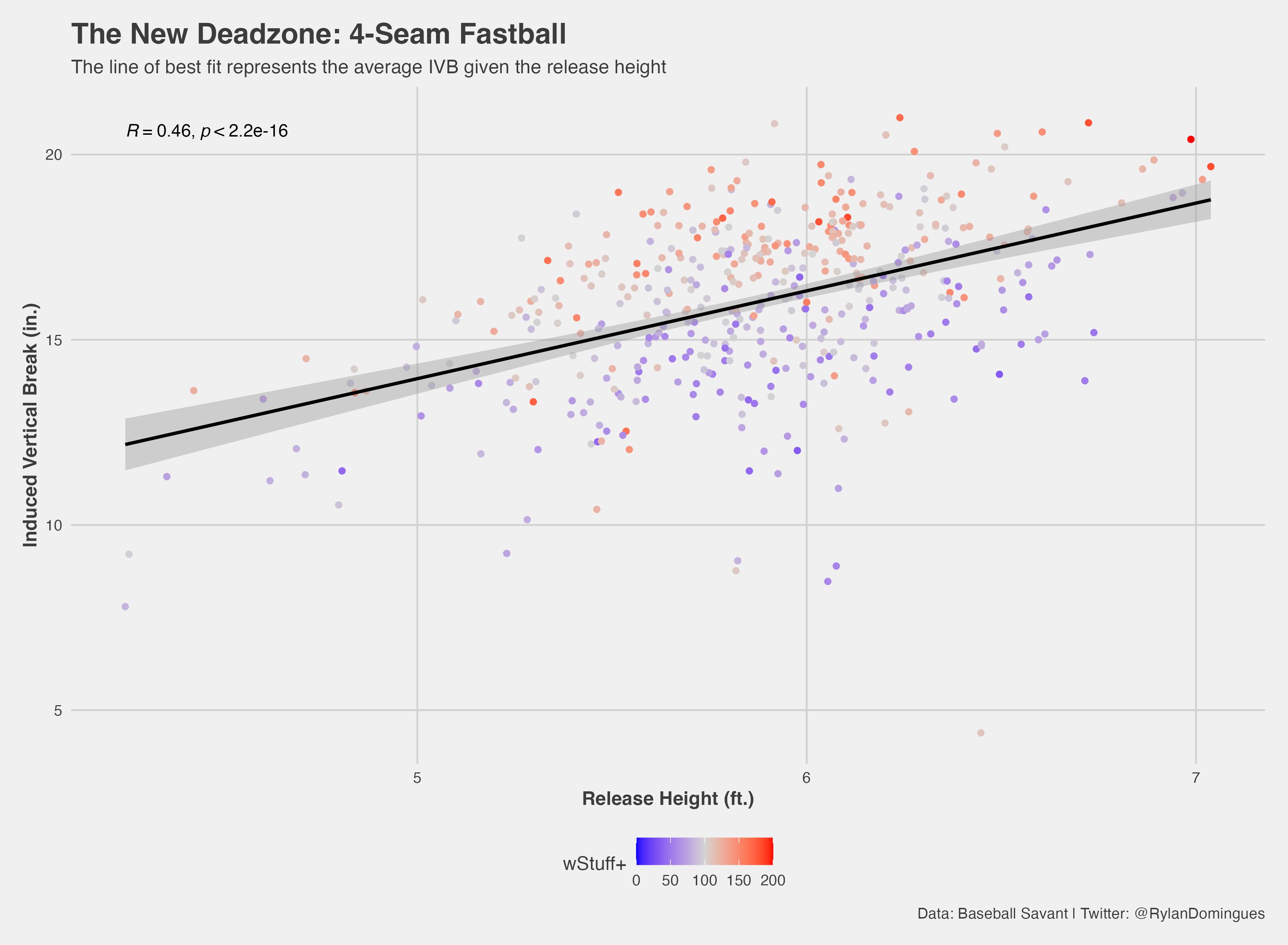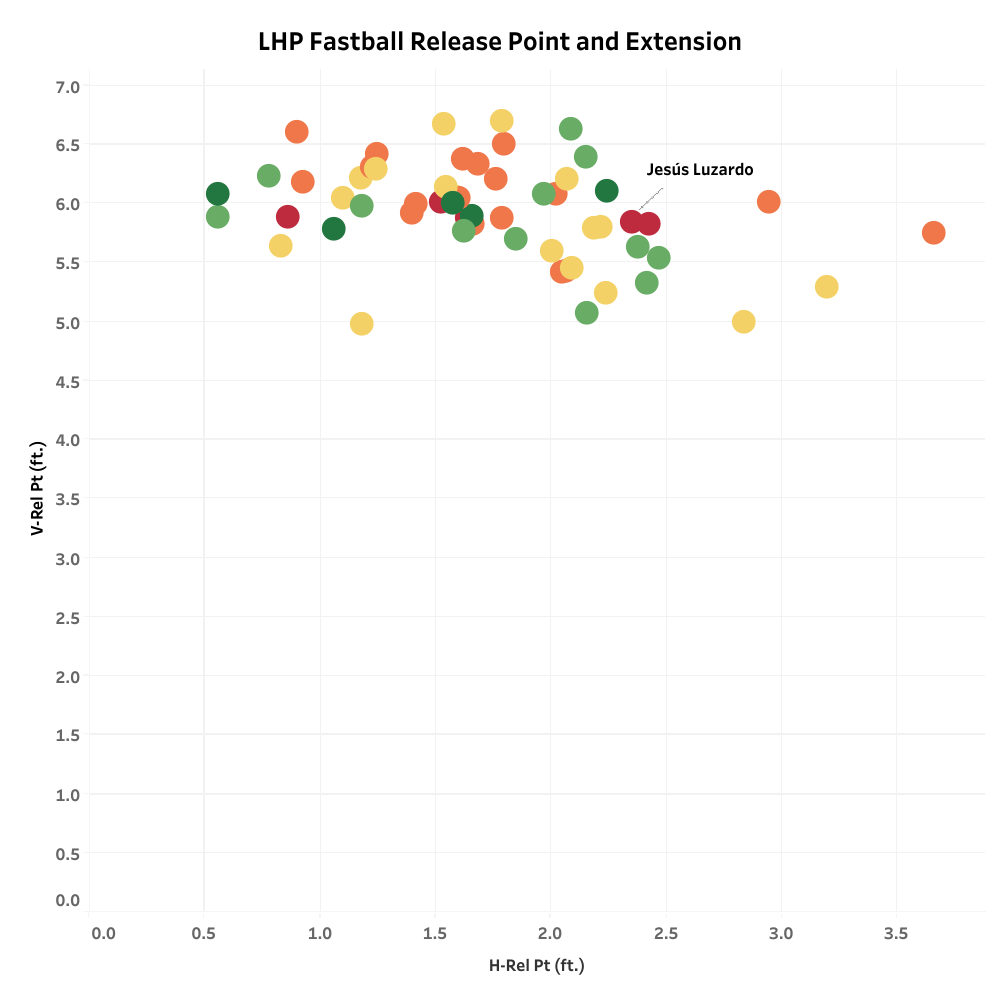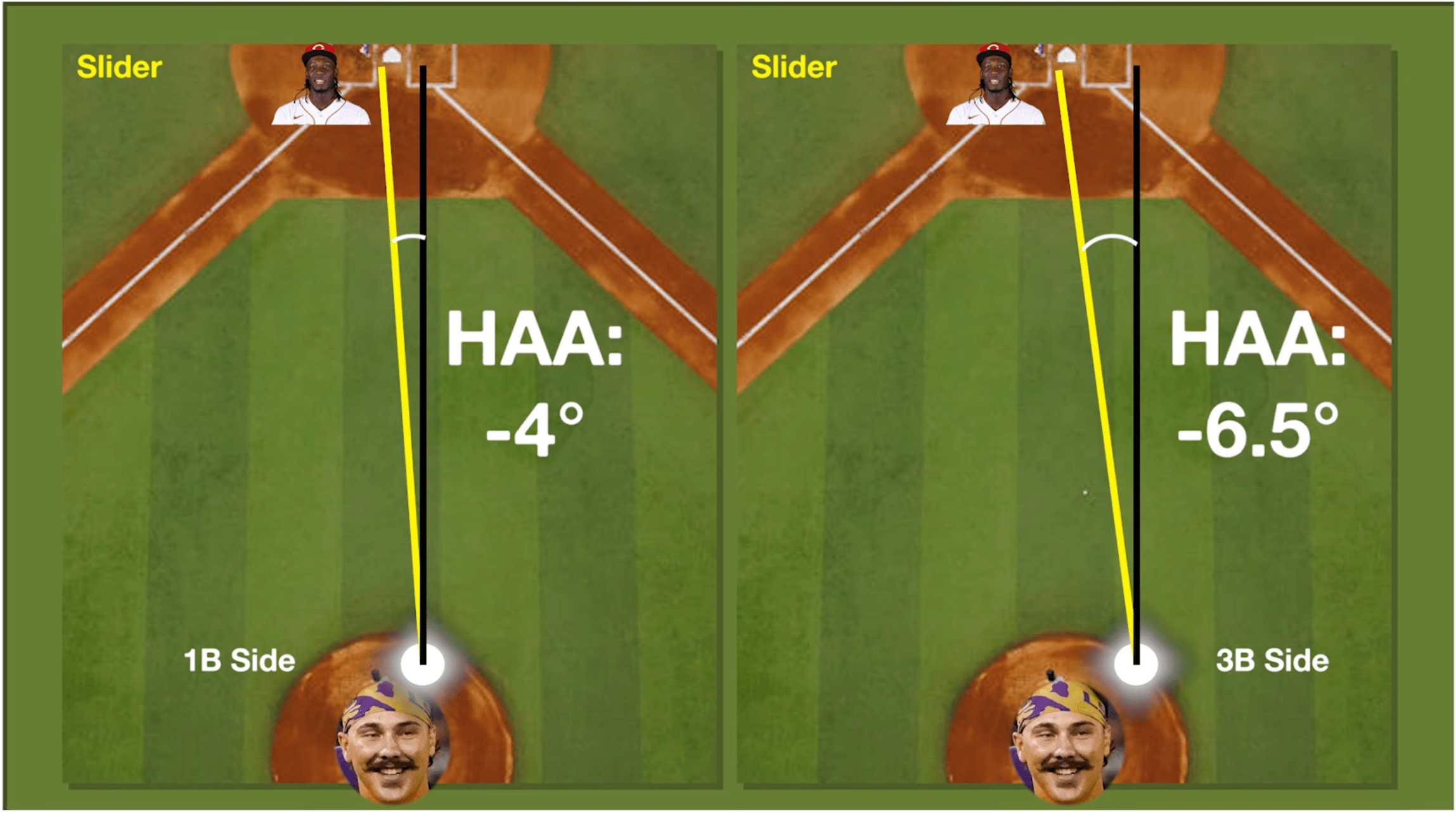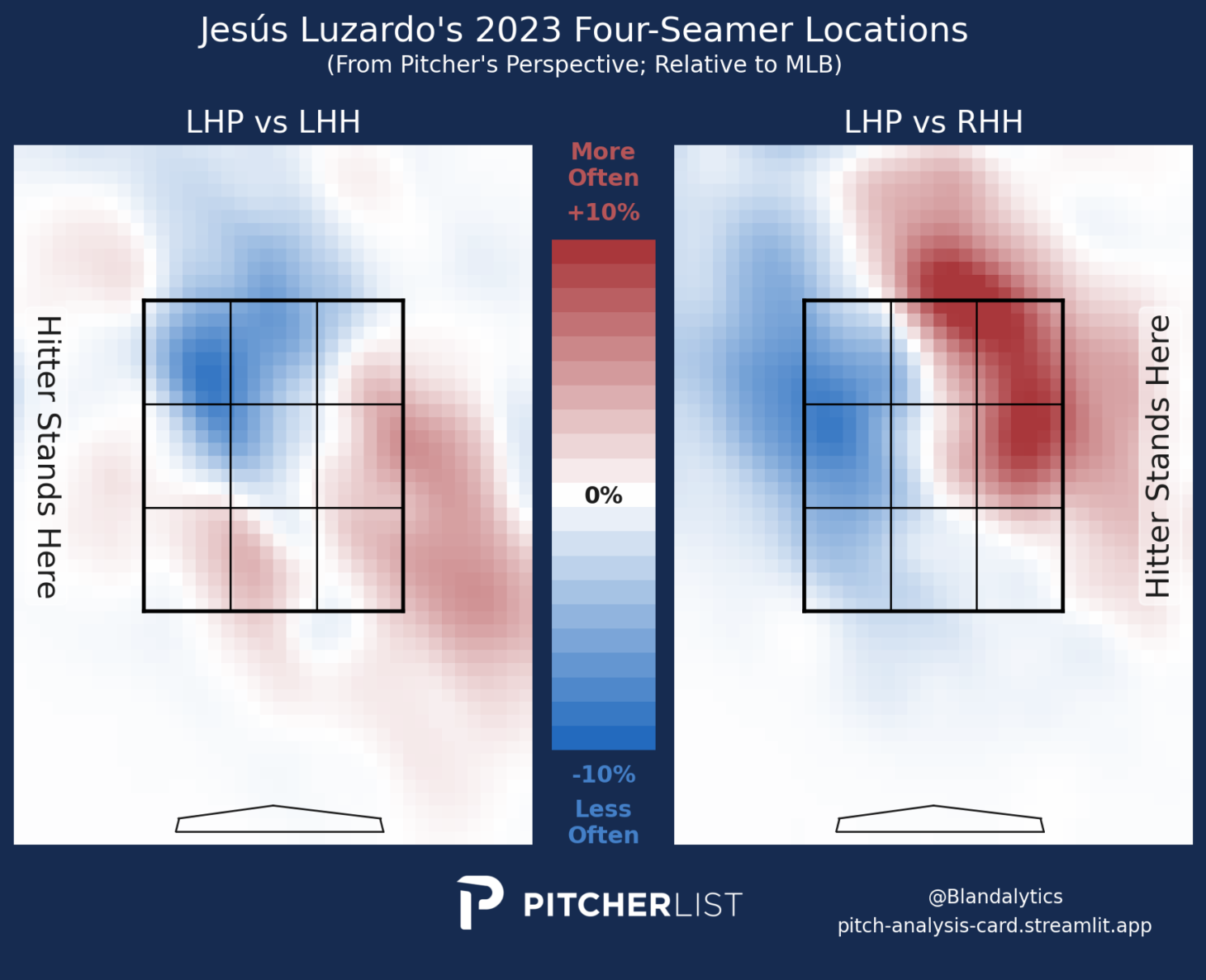We are currently in the golden age of publicly available pitch data, and it’s simply incredible. It’s a lot easier to learn “why is this pitch good” and “why is this pitch bad” and be able to judge pitches purely on their physical characteristics than ever before. From learning why pitches are good or bad, there’s more confidence in determining pitchers’ skills rather than their results-based stats.
That brings us to Jesús Luzardo, who had a solid year, posting a 3.58 ERA and 3.55 FIP in 178.2 IP with a 28.1% strikeout rate. Luzardo came up as a top-10 prospect in 2019 and struggled in Oakland before making his way to Miami, where he’s started to live up to the hype.
On the surface, especially after a strong year like 2023, it’s easy to glance at Luzardo’s stats to see that he’s just fulfilling his potential. But going under the hood, his fastball, which he features almost half of the time, may not be as good as it seems. By identifying the pitch’s strengths and weaknesses, Luzardo can reach his fastball’s ceiling, which is a skill in itself.
I’ll start by saying that his fastball is, in fact, very fast (woah, hard-hitting analysis, Nate). Among left-handed starters who threw at least 200 fastballs this year, Luzardo ranks second out of 57.
Pretty good company! Beyond that, Stuff+ grades all of these fastballs as above-average, but there’s some variance between where these pitches rank. Out of a similar 67 left-handed starter sample, here’s how those five pitchers’ fastball Stuff+ rank among the group.
Top velocity is not all-encompassing for a Stuff metric, which is essentially the point of Stuff+, but we can dig even deeper as to why these pitches are all still very effective. The next step is looking at the types of vertical and horizontal movement each pitch gets.
| Name | iVB | HB |
|---|---|---|
| Shane McClanahan | 17.6 | 9.9 |
| Jesús Luzardo | 14.0 | 13.9 |
| Cole Ragans | 15.9 | 12.7 |
| Tarik Skubal | 15.8 | 7.1 |
| Blake Snell | 18.8 | 4.6 |
Now, all of the pitchers have started to differentiate themselves, and where I believe Jesús Luzardo falls behind the group. Snell and McClanahan both post good induced vertical break (iVB) numbers, while Ragans and Skubal both get around average iVB. Luzardo gets the lowest iVB of the group and also has near-identical horizontal movement.
At identical vertical and horizontal movement, we get to the “dead zone.”
(1/3)The “Dead zone” Fastball is a FB offering from a LHP that has a spin direction of 10:30 and for a RHP it would be a 1:30 spin direction. This FB usually gets hit harder due to lower overall pitch movement and less room for separation between secondary pitches. You likely
— Carter Capps (@CarterCapps) September 17, 2020
The 10:30 spin direction yields a fastball with similar iVB and horizontal movement. It does not need to be a perfect alignment but at this movement, hitters see an average fastball that moves as they expect it to (which means they can barrel it). This visual from Rylan Domingues of Tread Athletics shows the relationship between release height, iVB, and Stuff+.

On the chart above, Luzardo would be below the line of best fit due to a high release height (5.7). Luzardo now finds himself with a new group of pitchers: those who share similar fastball shapes with him.
These pitchers all have similar movement profiles to Luzardo but come from varying release points, thus leading to different appearances.
Luzardo has an outlier poor extension at just 5.7 ft, which ranks in the third percentile of pitchers. His release height is around average, despite being 6’0″ tall. Mechanically, Luzardo puts his plant leg down early which limits his extension. It works as these mechanics fuel a high-velocity fastball, but the short step and subsequent low extension often do not bode well for fastball pitchers. A shorter extension means the ball has more time in flight, meaning the hitter gets more time to see the ball and read it.
While the release point is average, the extension stands out as very poor. The following visual has extension on a red-green color scale, with green meaning longer extension.

This brings us to the final part of the physical evaluation of the pitch: the vertical and horizontal approach angles of the fastball.
The vertical approach angle (VAA), the vertical angle from release at which a pitch approaches home plate, is average for Luzardo’s fastball. Flatter fastballs, which often come from lower release points, are harder for hitters to get on plane with and thus create more whiffs at the top of the zone and have a larger margin for error in the zone. Luzardo’s -4.7 is slightly above the -4.9 average for left-handed starters, but his VAA above average (adjusted for pitch height) is -0.01, meaning it’s completely average.
With horizontal approach angle (HAA), Luzardo stands out and this is how I believe he’s able to find success with his fastball. HAA is the horizontal angle from release at which a pitch approaches home plate. According to this Alex Chamberlain article, HAA is a bit more complicated because it is more dependent on pitch location and factors in pitcher handedness. One of the biggest takeaways from this piece is that sharper angles in toward a hitter create called strikes on the outside and more swings (and weak contact) on the inside. Additionally, extreme HAA (like VAA) makes command less important. Lance Brozdowski also put out a video recently breaking down HAA and Paul Skenes, which includes this visual that I think helps clarify HAA against opposing-handedness hitters.
In this video, Lance also explains how he thinks that HAA can be used in looking at different pitches (i.e. the difference between a fastball and a slider) and HAA Above Average (HAA AA) can be used for looking within the same pitch type.
Although Luzardo’s fastball has -1.4 HAA which is average, it has a +0.60 HAA AA which ranks second among left-handed starting pitcher fastballs. This allows Luzardo to get a super sharp angle inside to right-handed hitters, making it tough for them to do damage on an upper 90s fastball.
Now recall the previous GIF highlighting Luzardo’s poor extension and short step. With such a sharp HAA AA, he’s able to make up for the poor extension as he’s still locating his pitches in an uncomfortable spot at an uncomfortable angle.
Despite the sub-optimal movement, the approach and premier velocity make Luzardo’s fastball hard to hit for right-handed batters and an effective called-strike pitch against left-handed batters. Luzardo appears to be aware (to some extent) of this plan because he ranks among the best at throwing gloveside. His 48.9 gLoc% (glove-side-location rate) on the fastball is 94th percentile among starting pitchers, compared to a 19.5 aLoc% (arm side) which is in the 3rd percentile. Breaking out into handedness, Luzardo achieves what HAA AA says he should.

He is consistently gloveside to both batters resulting in called strikes vs. left-handed batters and whiffs vs. right-handed batters, but not necessarily in dominant fashion. I do think he could succeed if he went up and in vs. lefties, but after this research, I’m pretty confident he would not be able to without losing command of the pitch entirely.
He got excellent results even though the metrics don’t fully stand out. Luzardo’s fastball is an outlier and is complimented by the rest of his arsenal too. By working with a sharp HAA, Luzardo can work with a fastball that carries many below-average characteristics.
Yes, the upper-90s velocity is the calling card of the pitch, but we’ve seen all sorts of pitchers who bring premier velocity but struggle with their fastballs (Jon Gray, Hunter Greene, Luis Severino this year). By maximizing the fastball’s strengths, he’s able to maximize his results. Also doesn’t hurt to have a wipeout slider to complement the arsenal.
Photo courtesy of Icon Sportswire | Adapted by Aaron Polcare (@bearydoesgfx on X)
